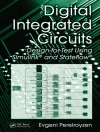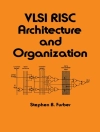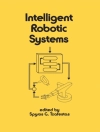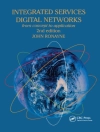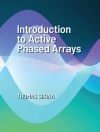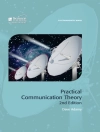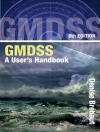Single Carrier Frequency Division Multiple Access (SC-FDMA) is a
novel method of radio transmission under consideration for
deployment in future cellular systems; specifically, in 3rd
Generation Partnership Project Long Term Evolution (3GPP LTE)
systems. SC-FDMA has drawn great attention from the communications
industry as an attractive alternative to Orthogonal Frequency
Division Multiple Access (OFDMA).
Introduction to Single Carrier FDMA places SC-FDMA in the
wider context of wireless communications, providing the reader with
an in-depth tutorial on SC-FDMA technology. The book introduces the
reader to this new multiple access technique that utilizes single
carrier modulation along with orthogonal frequency multiplexing and
frequency domain equalization, plus its applications in
communications settings. It considers the similarities with
and differences from orthogonal frequency division modulation,
multiplexing, and multiple access used extensively in cellular,
broadcasting, and digital subscriber loop applications. Particular
reference is made to the peak power characteristics of an SC-FDMA
signal as an added advantage over OFDMA.
* Provides an extensive overview of the principles of SC-FDMA and
its relation to other transmission techniques.
* Explains how the details of a specific implementation influence
the tradeoffs among various figures of merit.
* Describes in detail the configuration of the SC-FDMA uplink
transmission scheme published by 3GPP.
* Features link level simulation of an uplink SC-FDMA system using
MATLAB.
This is an essential text for industry engineers who are
researching and developing 3GPP LTE systems. It is suitable for
engineers designing wireless network equipment, handsets, data
cards, modules, chipsets, and test equipment as well as those
involved in designing LTE infrastructure. It would also be of
interest to academics, graduate students, and industry researchers
involved in advanced wireless communications, as well as business
analysts who follow the cellular market.
قائمة المحتويات
Preface
1 Introduction
1.1 Generations
1.2 Standards
1.3 Cellular Standards Organizations 3GPP and 3GPP2
1.4 IEEE Standards
1.5 Advanced Mobile Wireless Systems Based on FDMA
1.6 Figures of Merit
1.7 Frequency Division Technology in Broadband Wireless
Systems
References
2 Channel Characteristics and Frequency Multiplexing
2.1 Introduction
2.2 Radio Channel Characteristics
2.3 Orthogonal Frequency Division Multiplexing
2.4 Single Carrier Modulation with Frequency Domain
Equalization
2.5 Summary
References
3 Single Carrier FDMA
3.1 Introduction
3.2 SC-FDMA Signal Processing
3.3 Subcarrier Mapping
3.4 Time Domain Representation of SC-FDMA Signals
3.5 SC-FDMA and Orthogonal Frequency Division Multiple
Access
3.6SC-FDMA and CDMA with Frequency Domain Equalization
3.7Single Carrier Code-Frequency Division Multiple Access
(SC-CFDMA)
3.8 Summary
References
4 SC-FDMA in 3GPP Long Term Evolution
4.1 Introduction
4.2 Protocol Layers and Channels
4.3 Uplink Time and Frequency Structure
4.4 Basic Uplink Physical Channel Processing
4.5 Reference (Pilot) Signal Structure
4.6 Summary
References
Appendix – List of 3GPP LTE Standards
5 Channel Dependent Scheduling
5.1 Introduction
5.2 SC-FDMA Performance Measures
5.3 Scheduling Algorithms
5.4 Channel Models Used in Scheduling Studies
5.5 Channel-Dependent Scheduling Simulation Studies
5.6 Summary
References
6 MIMO SC-FDMA
6.1 Introduction
6.2 Spatial Diversity and Spatial Multiplexing in MIMO
Systems
6.3 MIMO Channel
6.4 SC-FDMA Transmit Eigen-Beamforming with Unitary
Precoding
6.5 SC-FDMA Spatial Diversity
6.6 Summary
References
7 Peak Power Characteristics of an SC-FDMA Signal
7.1 Introduction
7.2 Peak Power Characteristics of a Single Carrier Signal
7.3 PAPR of Single Antenna Transmission Signals
7.4 PAPR of Multiple Antenna Transmission Signals
7.5 Peak Power Reduction by Symbol Amplitude Clipping
7.6 Summary
References
8 Simulation of a SC-FDMA System Using Matlab®
8.1 Introduction
8.2 Link Level Simulation of SC/FDE
8.3 Link Level Simulation of SC-FDMA
8.4 Peak-to-Average Power Ratio Simulation of SC-FDMA
8.5 Summary
References
Appendix – Simulation Codes
Appendix A – Derivation of Time Domain Symbols of Localized FDMA
and Distributed FDMA
A.1 Time Domain Symbols of LFDMA
A.2 Time Domain Symbols of DFDMA
Appendix B – Derivations of the Upper Bounds in Chapter 7
B.1 Derivation of Equations (9) and (10) in Chapter 7
B.2 Derivations of Equations (13) and (14) in Chapter 7
Appendix C – Deciphering the 3GPP LTE Specifications
Appendix D – Abbreviations
Index
عن المؤلف
Hyung G. Myung currently works as a senior engineer at Qualcomm/Flarion Technologies, Bedminster, New Jersey. His research interests include 3GPP Long Term Evolution and Single Carrier FDMA. Myung served in the Republic of Korea Air Force between 1996 and 1999 and then worked as a software engineer for Array Comm, California between 2001 and 2002. During the summer of 2005 he worked at the Communication & Networking Lab at the Samsung Advanced Institute of Technology, and he then worked at the Air Interface Group of Inter Digital Communications Corporation, New York as an intern between February and August 2006.
David Goodman has been a Professor of Electrical and Computer Engineering at Polytechnic University in Brooklyn, New York, since 1999. He currently holds a temporary position as Program Director in the Computer and Network Systems Division of the National Science Foundation.


